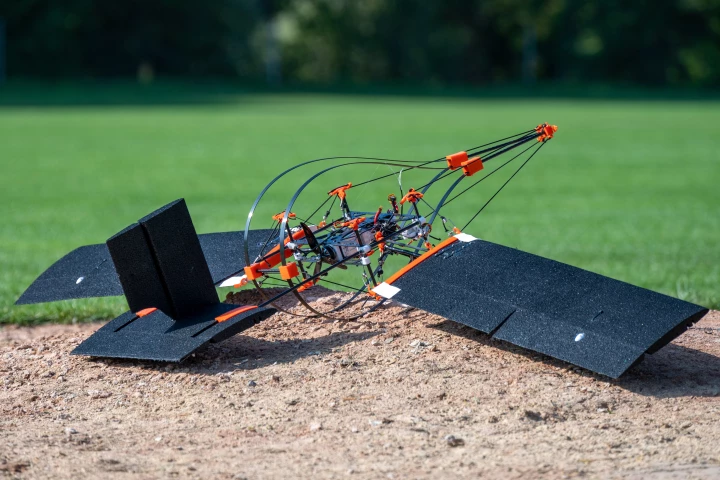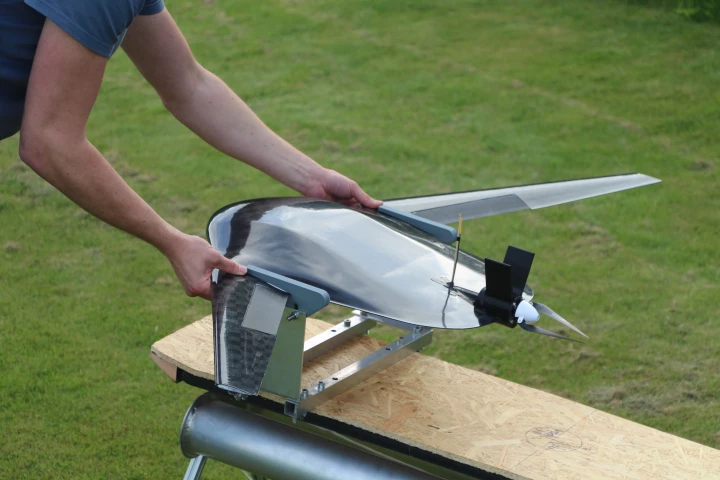Fixed-wing drones
-
Despite the fact that they bang their heads against trees on a daily basis, woodpeckers don't suffer brain injuries. Inspired by the tough-headed birds, scientists have developed a fixed-wing drone that can survive frontal collisions.
-
If you're conducting covert military reconnaissance, you probably don't want the enemy seeing what's obviously a drone flying overhead. That's where the Evolution Eagle is intended to come in, as it's a drone that just looks like a big ol' bird.
-
Multicopter and fixed-wing drones use up a lot of power fighting the wind. The Morpho VTOL drone addresses this problem with morphing wings that adapt to lessen its wind resistance. In fact, they can even use the wind to the aircraft's advantage.
-
VTOL drones may be versatile, but the weight of their extra hardware results in a shorter range than that of fixed-wing-only drones. That's where the FLARES system comes in, as it lets fixed-wing drones make vertical takeoffs and landings.
-
Next-generation fighter jets will go into combat with semi-autonomous wingman drones designed to act as force multipliers. Here's one in development: Airbus has just dropped its Remote Carrier demonstrator out of a cargo plane, for a mid-air launch.
-
Researchers from Chalmers University of Technology are working on a new autonomous search and rescue system made up of a marine vessel that can launch a fleet of fixed-wing drones to scout a predefined area, along with live-feed quadcopters.
-
There are now a lot of fixed-wing drones on the market, and most of them look pretty similar. FLY-R's aircraft are different, though, in that they incorporate a rhomboidal wing design – it's claimed to offer some distinct advantages.
-
Although there are now a few different crop-spraying multicopter drones, fixed-wing drones are faster and have a longer battery range. That's where the recently US-certified autonomous electric Pelican crop duster comes into the picture.
-
One of the best ways to extend the range of a VTOL aircraft is to add wings for horizontal flight, and Drone Volt's Heliplane brings this kind of thinking to the industrial drone market, offering long flight endurance times, 1.6-kg (3.5-lb) payload capacity and VTOL/hover capabilities.
-
Lately we've been seeing an increasing number of VTOL (vertical take-off and landing) drones, that combine the best qualities of fixed-wing aircraft and quadcopters. So, what do you do if you already manufacture a standard fixed-wing model? In the case of FlyTech, you offer a VTOL upgrade module.
-
We've already heard how batteries that are built into the structure of items – such as cars or satellites – could help extend run times without increasing bulk. Now, the flight time of a drone has been almost doubled, thanks to such "structural batteries."
-
Because fixed-wing drones are more energy-efficient than multicopters, they're often used for tasks such as mapping the ocean. Many of them require landing strips, however, which there isn't always room for on ships. A new technique gets around that problem, using copters to catch them.
Load More











